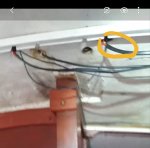boatmike
Well-known member
I am afraid some production boat manufacturers were as guilty as amateur owners for not carrying out good practice when fitting cleats etc. However well the designer specifies what the yard should do its down to the care taken by the yard in quality control. Sadly I have repaired a number of Moodys and Westerlies for exactly this failure. Really sad as the boats themselves are built well over spec and should last many years. Never seen a Swedish boat and very few French and German boats with such problems but then I have been retired for a long time now and I may be out of date. Having said that though the majority of problems I have seen have been amateur additions rather than original yard built problems.Thanks. My query was largely the result of having recently removed a number of original skin fittings from a 1999 Moody. Two of the encapsulated plywood cores were rotten and needed replacing.

